- Joined
- Dec 2, 2005
- Messages
- 71,073

Friends, I dont want to descend into hyperbole or exaggeration, but I was facing terrible odds. Across the table from me, like the massed ranks of Zulu warriors at the Battle of Rorkes Drift, was a vast army of uncleaned penknives, their bolsters glinting in the failing light. I could see the dark smudges of oxidisation camouflaging their blades, and taste the metallic iron smell in the back of my throat, like freshly-spilled blood. I was heavily outnumbered, with just a few simple cleaning products to aid me in my struggle. I was running out of 3-in-1!
Now Im sure many of you have seen the 1964 film Zulu, which depicts that famous battle just referred to the African one, not the one taking place on a Yorkshire table-top. You may recall how, in the face of a terrible onslaught, outnumbered 40-1, the Colour Sergeant steels his men, giving a quiet command here, a word of advice there, reminding them that they are British soldiers. As the Zulu impis mass ready for another attack, one young private asks, Why is it us, why us?
Sergeant Major Bourne tells him, Because were here lad. Just us. Nobody else.
Well my great grandfather was a Colour Sergeant on that same continent, in that same period. He survived to go off and fight in the German Jungle of WW1, and to munch bisquacks with his grandson in his old age. As exhaustion began to grip me, as I counted my last measly few pipe-cleaners, as I stared out across the table-top and saw the sheer scale of what opposed me, I think I heard some words of encouragement in my ear. Get on with the job Black, you shirker, I thought to myself, and shaking my fist at the innumerable ranks of dirty penknives facing me, I cried out, No darn tables going to get the better of me! And I went to work!

Now Ive done more than my fair share of hand to hand combat in the past, and when heavily outnumbered, Ive always found it a good move to go for the big one first, put him down, and put him down hard. So I went for the hulking great Japanese Hobo Knife from the 1970s, which Randy Redden very kindly sent my way a couple of months back. The ugly brute had been hanging out with the Table Gang ever since, and needed tackling. He stood at more than four and a half inches of solid bone and Japanese steel.

These huge knives are a reminder of a time when Japan, still no doubt recovering from WW2, was the Pakistan of its day in terms of much of its production of export pocket cutlery, when low grade steel and crude manufacture were the norm. Im not sure how much these knives sold at in the countries they were exported to, but I doubt it was much. Today, some regard them as something to collect. Certainly a cutlery anomaly. Thanks for your kindness Randy :thumbup: The only markings I can find on the knife are the stainless marks on the spoon and fork.

Youre on MY table now!
The whistle in the first few photographs is also Japanese, and is probably even older than the knife I think. Its another export item.

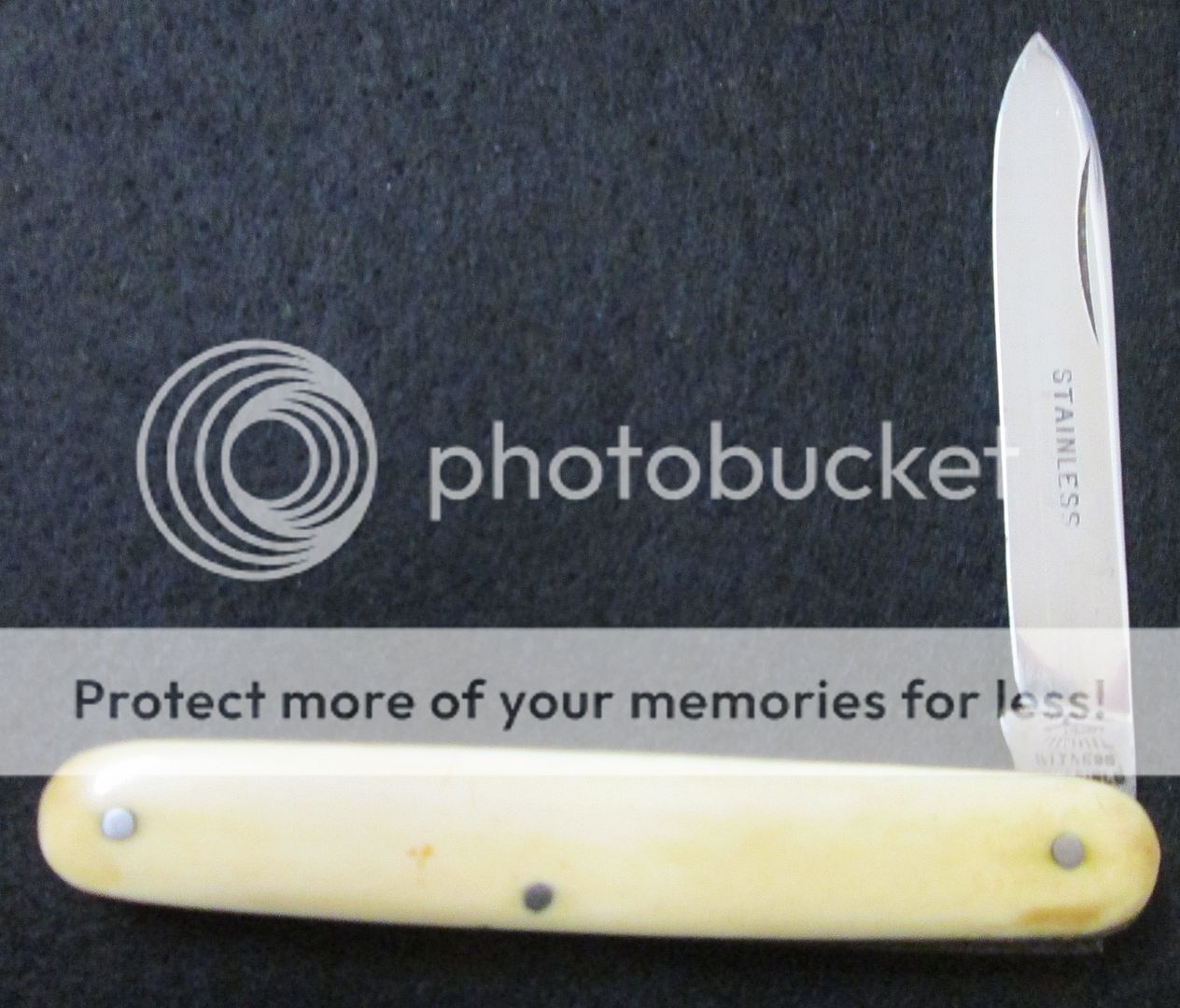

I really must get some better photos of this old fruit knife from Taylors Eye Witness, pre-WW2 I think, with its ivory covers and sunken joint, its quite handsome. Measures 3 1/8.

A CK Budding/Grafting knife, made in Italy. Nothing fancy, but a serviceable enough gardeners knife. Measures 4 1/8 including the brass spud.

In the 1950s, 60s, and 70s, Richards of Sheffield completely dominated the British pocket knife market with their inexpensive clam-shell knives, and they account for at least 75% of the knives I come across on market stalls. The knives were so cheap though, that people neglected and mistreated them, and so most of the Richards knives I see are not worth buying. Its very unusual to see one in such great condition as this 4-blade Scout Knife, which looks like it came straight off the display card behind the counter of a 1960s newsagent. It has a carbon steel blade, and stainless tools, measures 3 5/8 closed.
The item in the background of the above picture is a brass hasp to secure an army or navy kit-bag, allowing it to be threaded through the grommets and locked with a padlock.
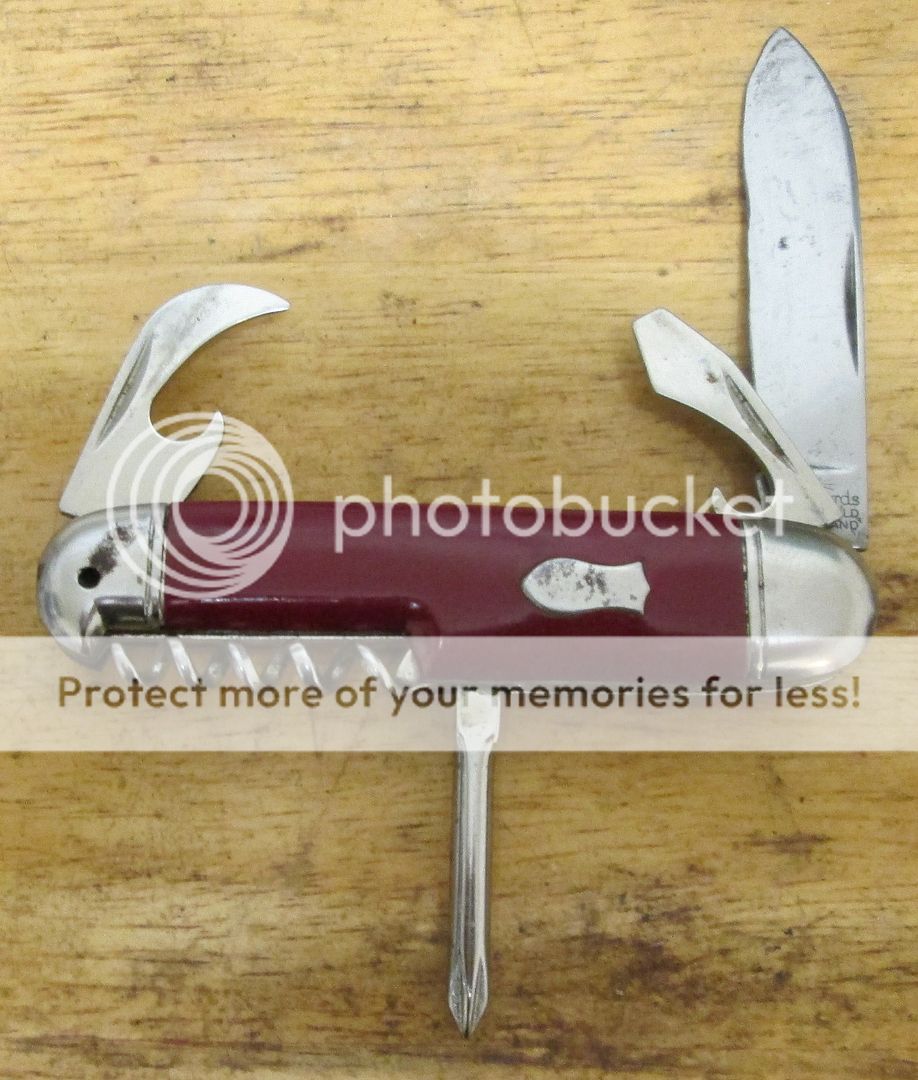
Richards made thousands of different patterns over the years. This 5-blader is not in such great shape as the previous knife, but apart from the missing bail, is still in pretty good nick. Measures the same as the knife above.

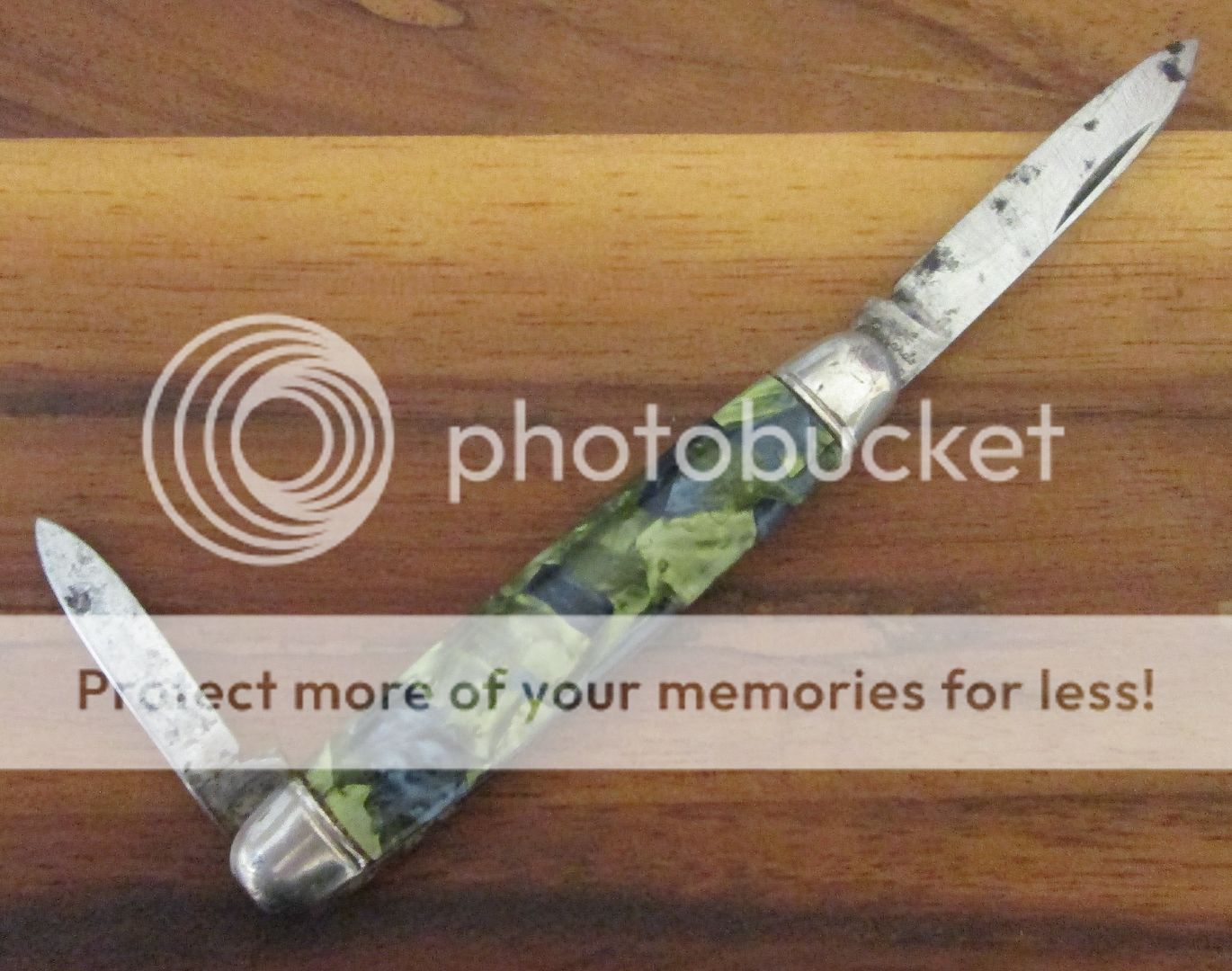
Another Richards which has seen a little use is this 3 Penknife with sunken joints. Still has great walk and talk.

Richards could turn out knives cheaper than other Sheffield cutlers because of the clamshell covers and Swinden Key construction they used. They couldnt compete with even cheaper Chinese knives, like this one though.



An older Sheffield knife, though still post WW2 I think, is this Equal End Jack from Wostenholm. Its seen plenty of use, but still a useful knife. Measures 3 ½.
The hand-cut Crownshaw 18 long file may well be over 100 years old. I think its rather nice, and it only cost me £1! I might ask Stan Shaw if he wants it


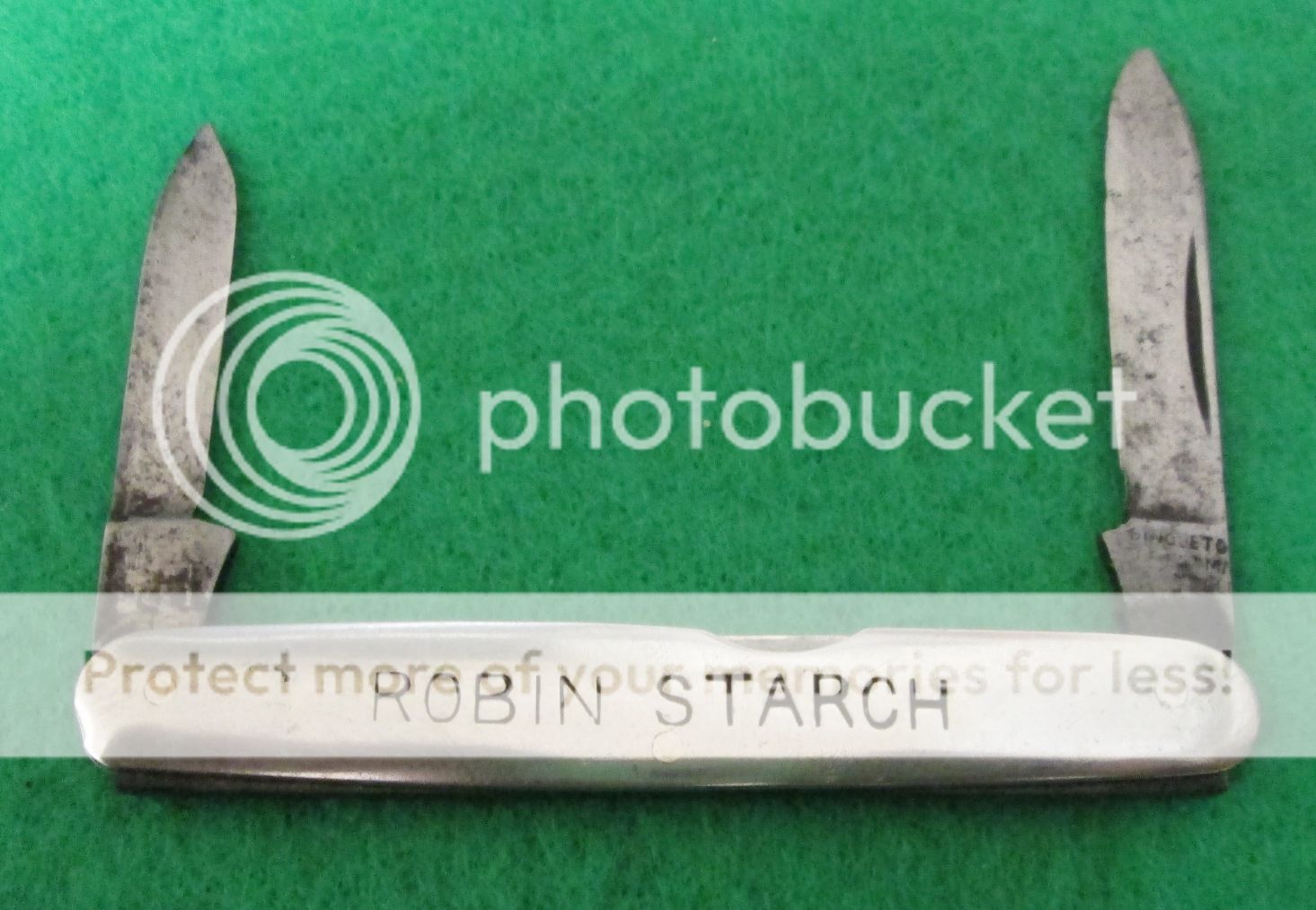

This well-made advertising knife by Singleton & Priestman (1895-1936) is not much thicker than a £5 note! It carries advertising for Reckitt & Sons Ltd (1840-1938), who helped to put starch in some of those famously stiff British shirt collars!
The cake knife is nothing fancy, but made by Joseph Rodgers & Sons.



This old knife is so worn its hard to give a name to the pattern, but look at that Olde Worlde jigging

Some old bread and lino knives!
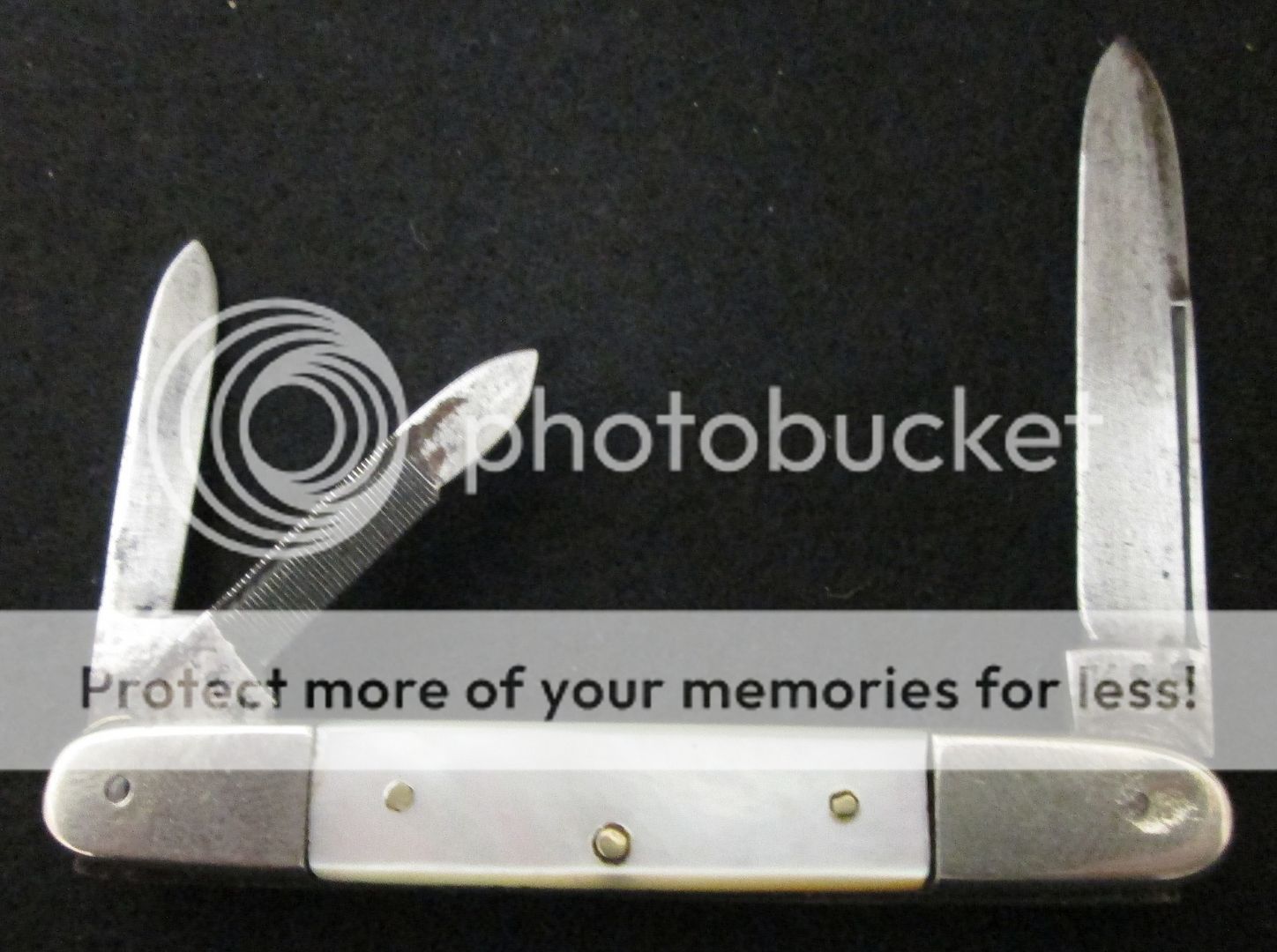




Im still researching this 3-blade Penknife with MOP covers, so any help would be welcome. Im wondering if K & S might be one of the Kastor tang-stamps, though its not on my list. Measures 2 5/8.


Finally (for now), we come to this 3 Penknife from George Wostenholm, with sunken joints. This would be a lovely little knife if some doughnut hadnt said, Hang on, dont use the Mother-of-Pearl, lets try some of this new-fangled Pearlux stuff, theyll never know the difference! But over the decades that followed, the Mother-of-Toilet-Seat shrank :grumpy: Almost worth recovering.
So THERE table, kicked your backside!
Jack
Last edited:



